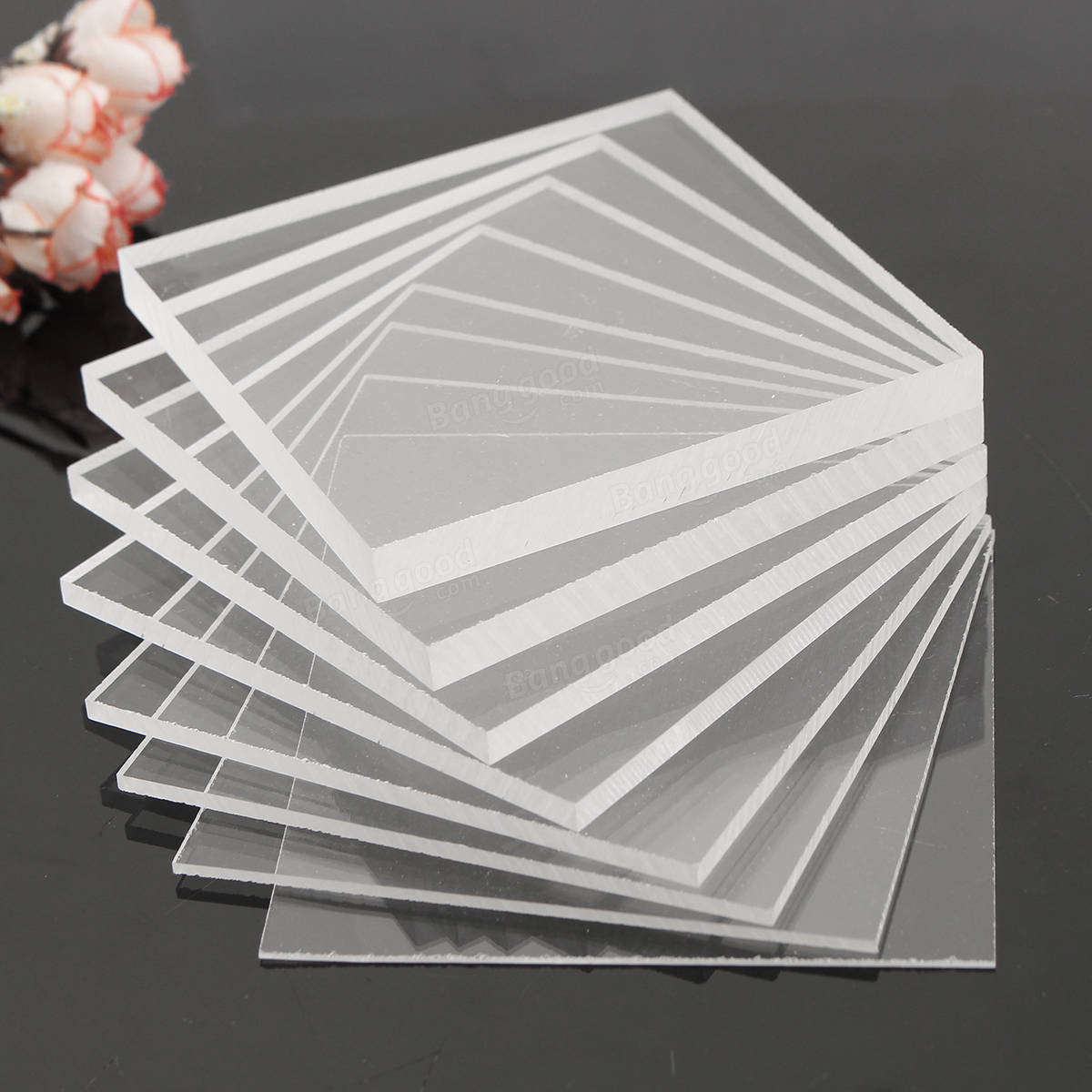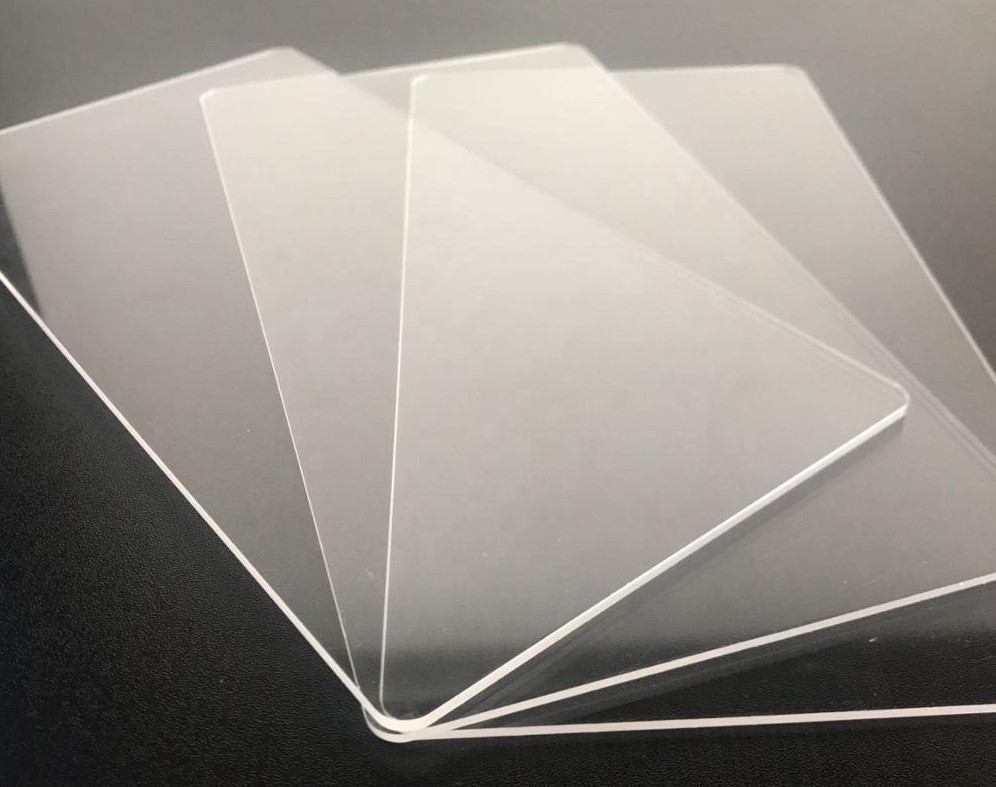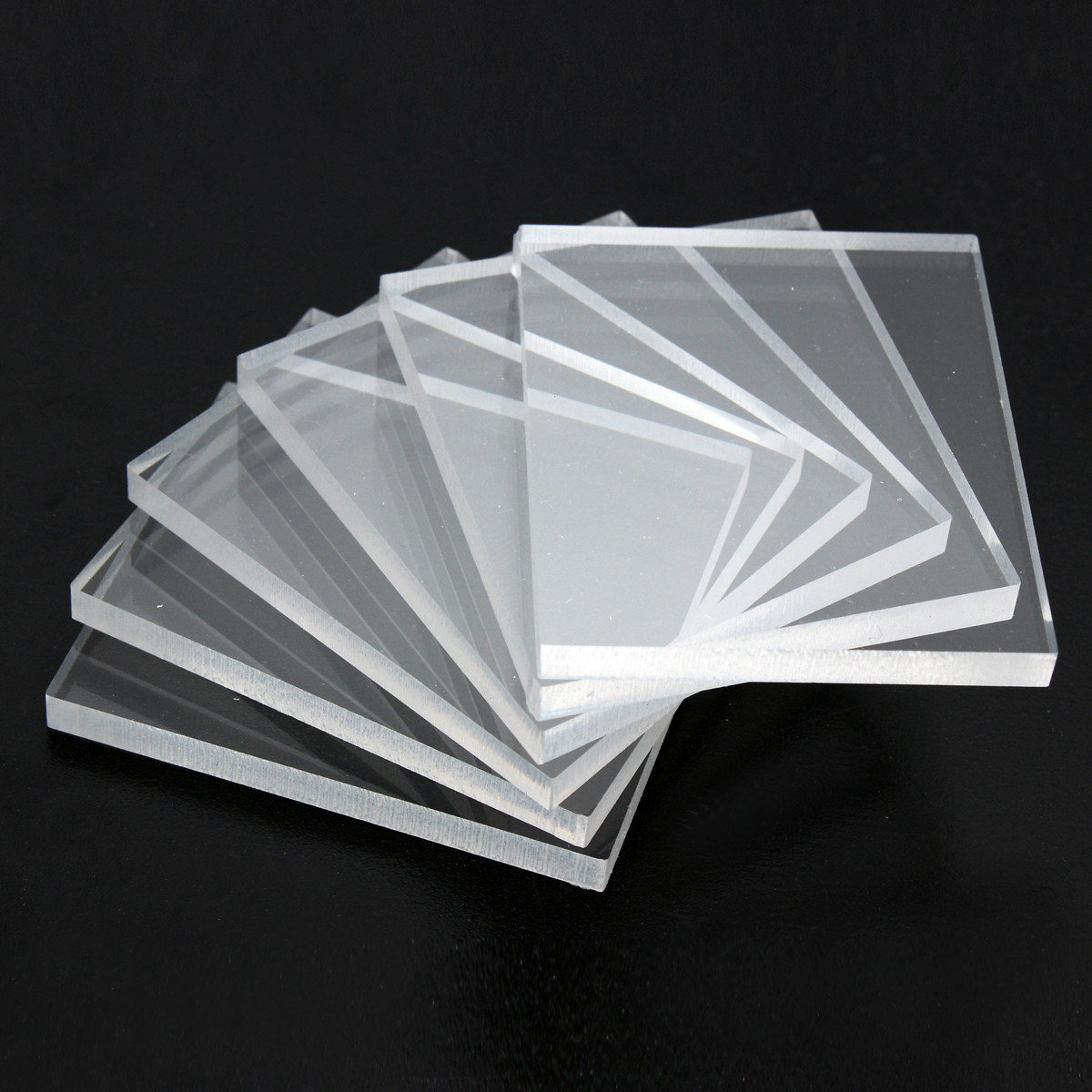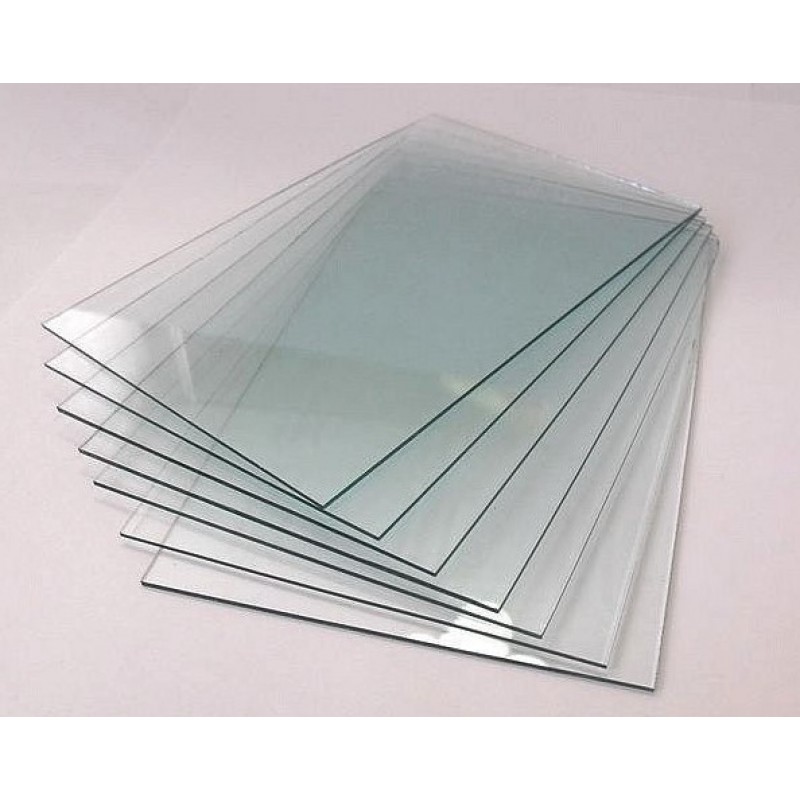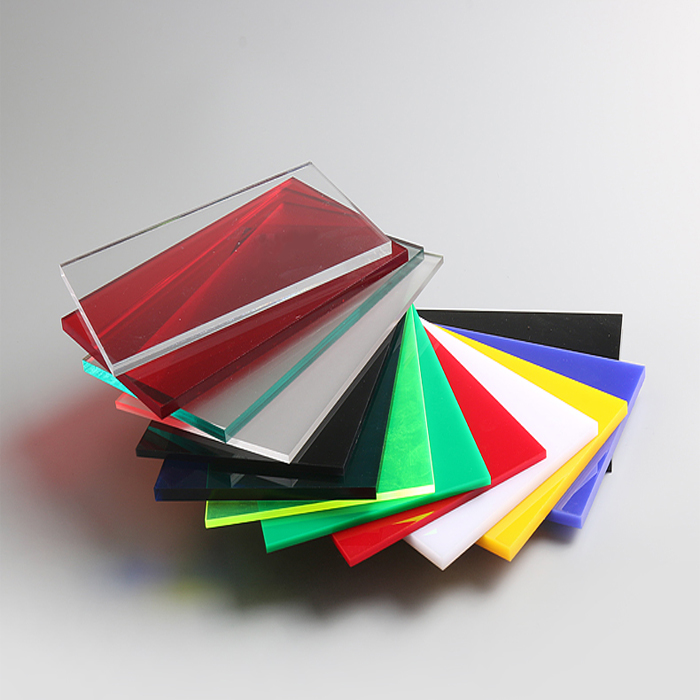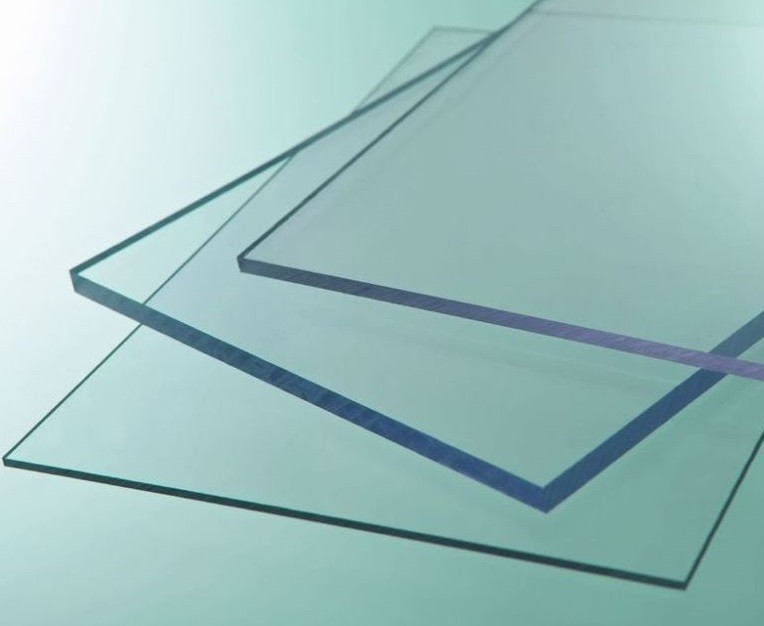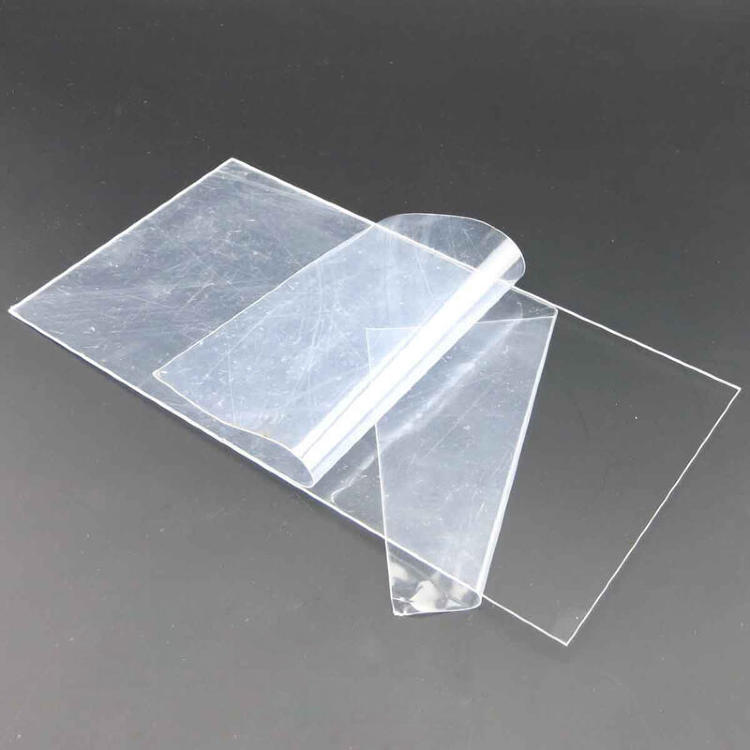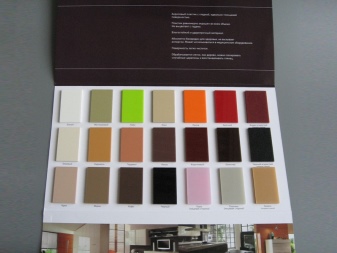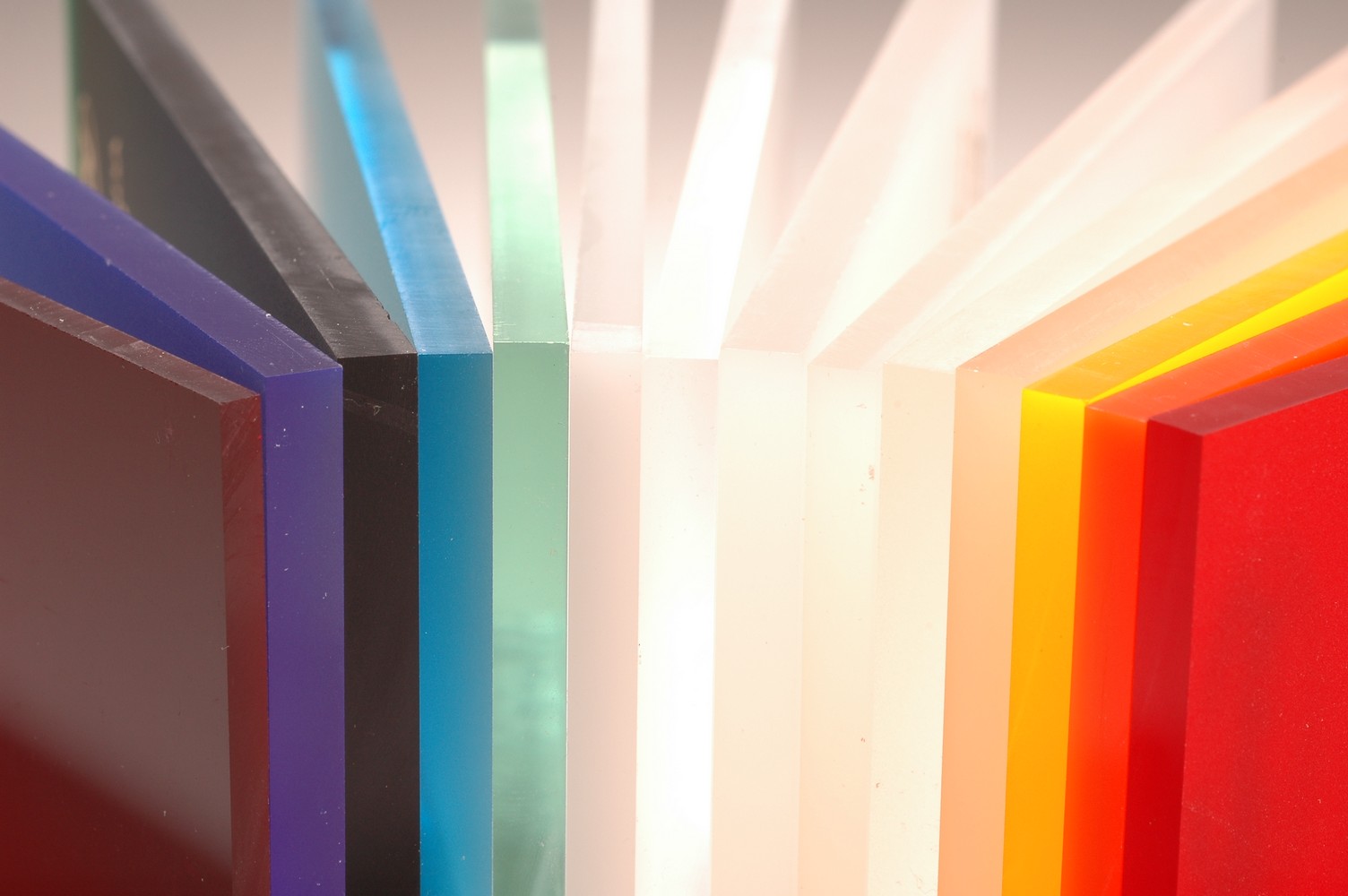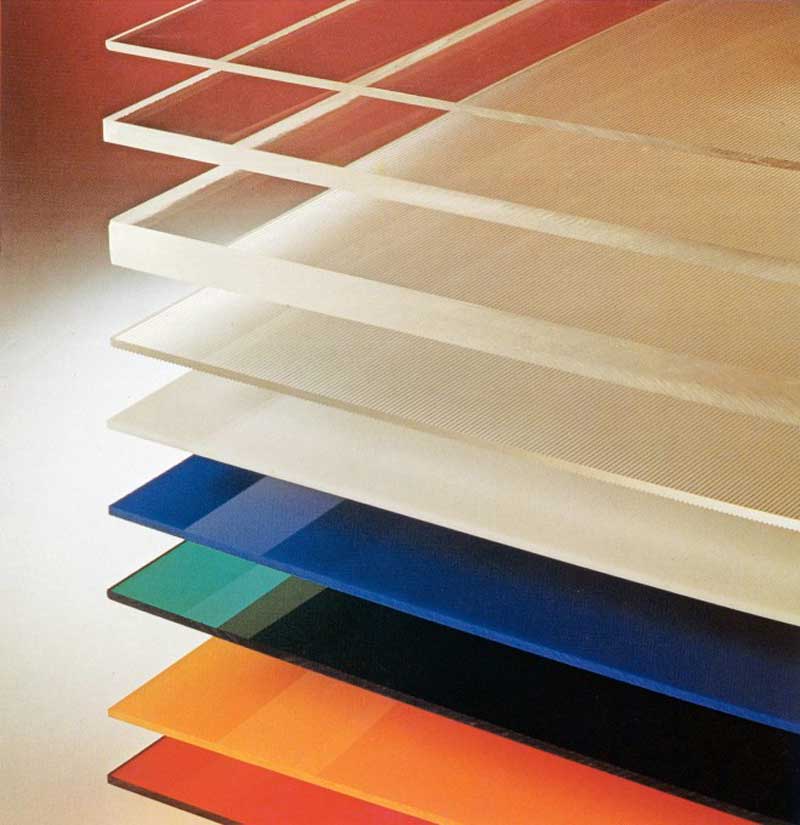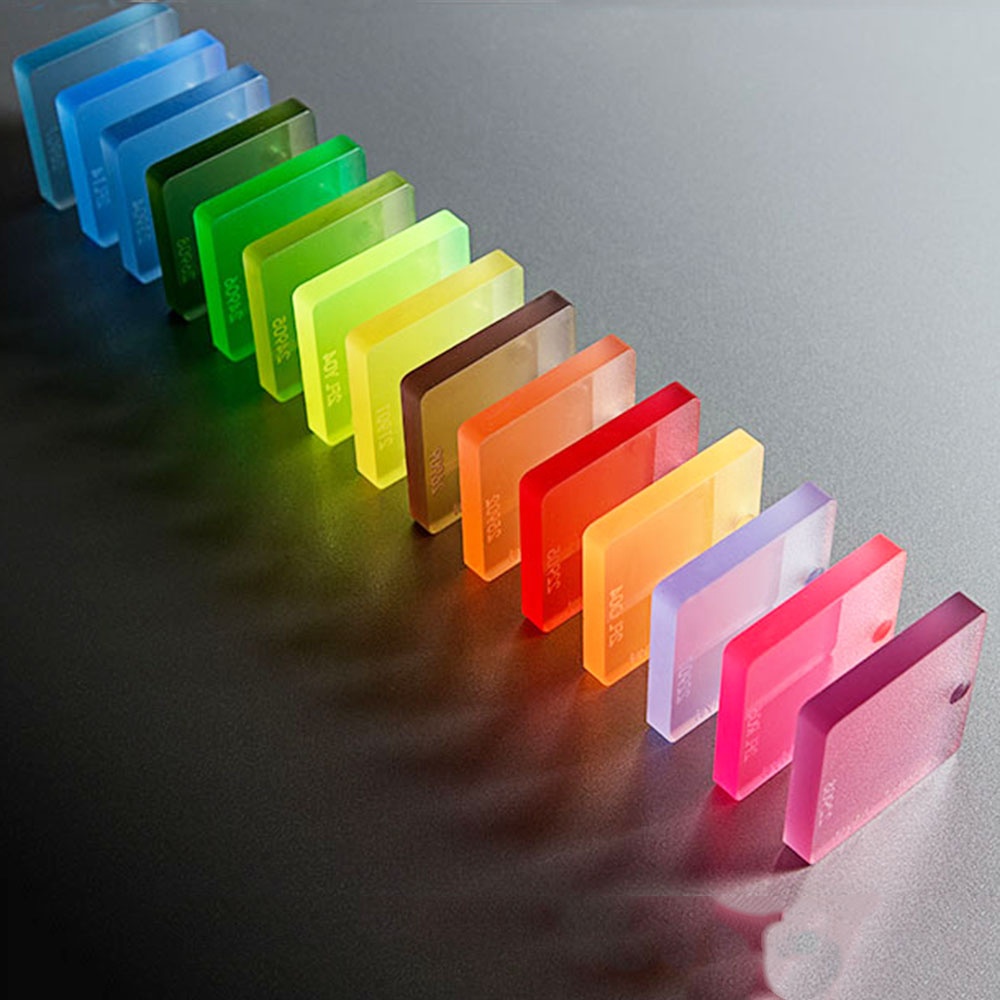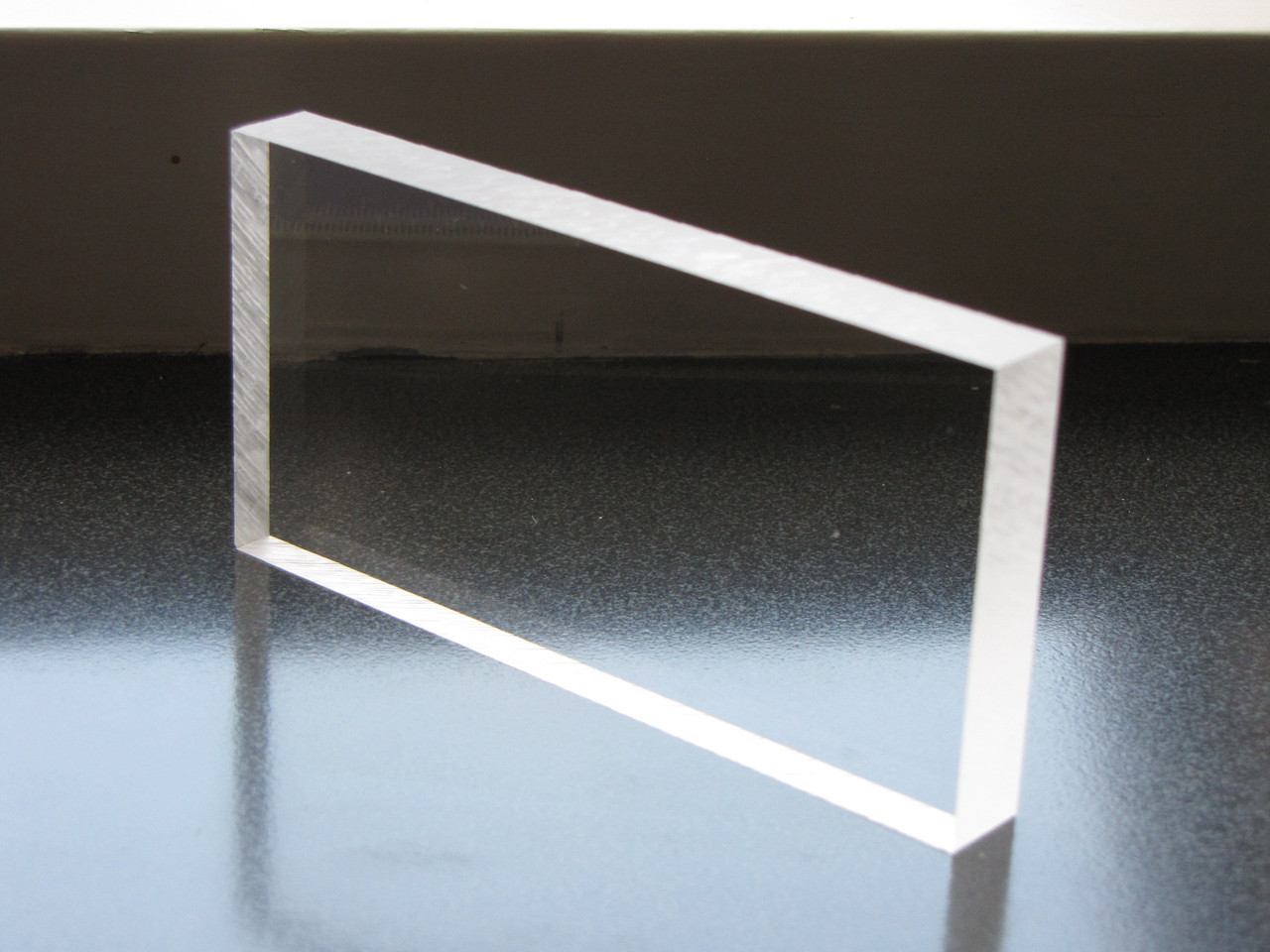Plexiglas application
Organic glass is widely used. High transparency combined with good mechanical properties paved the way for this material to be used in the field of transport: aviation technology, the automotive industry, etc. PMMA is widely used in the lighting industry, both polished sheet material and granules for die casting or extrusion of luminaire diffusers.

Fig. 2. Motorcycle headlight
In addition, plexiglass is used in architecture and the construction industry, the manufacture of household goods, instrument making, etc. It is widely used in agriculture as a material for glazing greenhouses and greenhouses. Plexiglas is a good structural material for use in construction, for example, for the production of windows and doors, verandas and for finishing work and some products. In instrument making, plexiglass is used as a component of tools and devices. In medicine, it is also used in the field of instruments, in the manufacture of contact lenses and in prosthetics. In the field of optics, lenses and prisms are produced from this wonderful material. Also, Plexiglas can be used to make microelectronic components, games and toys for children, personal protective equipment (glasses, masks), pipes and tubes for the food industry, various products for sports equipment and much more.
Plexiglass is indispensable for outdoor use; it is used to cover billboards, signboards, light boxes and other outdoor information and advertising media. We see this material everywhere when decorating and filling shop windows, in stained glass windows, security glazing, designer products, plumbing fixtures, musical instruments, trade materials, such as price holders, POS materials, aquariums, souvenirs, etc.
Also in the materials of the latest generations, especially in aircraft and helicopter construction, plexiglass is actively used in the composition of multilayer composite materials, including in combination with inorganic glasses.
Stamps
Sheet lighting plexiglass is produced by grades:
- SE - extrusion;
- SB - block;
- BOT - transparent, made by extrusion;
- SBS - flame retardant block;
- SBPT - block with increased heat resistance.
BOT is transparent, other brands are cloudy.
Technical domestic plexiglass is produced plasticized (TOSP) and unplasticized (TOSN).
TOSP, in turn, can be designed for:
- TOSP-N - production of acrylic bathtubs, shower trays, sanitary ware, etc. (plumbing);
- TOSP-U - thermo and light stabilized.
According to GOST 10667-90, plexiglass sheet is also marked: CO (organic), then indicate the temperature at which the polymer softens (for example, 95, 120, 133) and a letter designation indicating the field of application (K - structural, A - aviation) ...
Plexiglas TOSP
Technical plexiglass of domestic production, manufactured in accordance with the requirements of GOST 17622-72, TU 2216-271-05757593-2001. According to this standard, this material can be produced:
- opaque colored (primary colors are blue, red, yellow, green, orange and white);
- transparent colorless;
- transparent colored.
It lends itself well to machining. The plasticizers included in the composition increase the plasticity, slightly reduce the softening point of the polymer.
According to GOST, technical characteristics of TOSP:
- impact strength of organic glass TOSP from 8.8 to 13 kJ / m2 (determined by the sheet thickness);
- tensile strength - not less than 61.7 MPa;
- softening temperature - not less than 92 ºС;
- density at 23 ° C - 1180 kg / m3;
- elongation at break - not less than 2%;
- linear shrinkage - about 3.5%.
TOSP plexiglass is the most popular, it is used in a variety of areas: from decor and everyday life to parts for various purposes in industry.
Organic glass TOSN
According to GOST 17622-72, TOSN organic glass (unplasticized) has the following technical characteristics:
- density at 23 ° C - 1180 kg / m3;
- elongation at break - not less than 3.5%;
- tensile strength - 70 MPa;
- linear shrinkage - about 3.5%;
- softening temperature - not lower than 110 ºС;
- impact strength of thermoplastic - from 8.8 to 15 kJ / m2 (depending on thickness).
The plastic is characterized by high resistance to stress and cannot be molded. Withstands higher operating temperatures than TOSP (90 versus 80 degrees Celsius).
Polishing
Completely dispense with this operation at times
impossible. But before proceeding with it, the surface is well prepared -
grind off all irregularities with fine sandpaper. It is better to do it with
water. Hand polish with a piece of flannel or old woolen
blankets pre-lubricated with polishing paste. Finish polishing
with a piece of the same cloth, but completely clean or oiled. Work will go
faster if using a polishing wheel attached to the shaft of a conventional
emery sharpener. In the simplest case, it can be a pack of mugs from a bike,
felt or cloth sandwiched between two washers. For polishing round products
use a soft circle, for flatter ones - a hard one. One, smeared
polishing paste, polish, other, clean, bring the final
gloss. If the linear speed of the polishing wheel is too high - about 10
m / s, - local overheating of the product surface is possible, the material will bubble,
and fixing this defect is quite difficult.
Characteristics of plexiglass
Since the material can be both transparent and colored, its use is not limited to glazing only. And other physical qualities make it possible to use plexiglass as a decoration for furniture facades, walls, ceilings, countertops and more.
- Light transmittance - depends on the degree of transparency of the plastic. Products that are completely transparent transmit up to 92% of light, colored ones - from 20 to 90%.
- The polymer is resistant to UV rays, so it does not turn yellow and does not change color over time.
- The smooth, pore-free surface does not collect dust and dirt and does not contribute to the growth of bacteria.
- Low thermal conductivity makes the polymer an excellent thermal insulator, unlike ordinary glass. For greenhouses and greenhouses, this property is invaluable. And for the glazing of verandas and attics, a special type of plexiglass is offered - Heatstop.
- The impact resistance of the material is 5 times higher than that of quartz glass. The Resist brand has an even higher indicator, for its processing you have to use a special tool.
- Very light weight - 1 sq. m. weighs 1.2 kg with a thickness of 1 mm, it makes it possible to significantly lighten the supporting structures.

Decorative possibilities
Plexiglass is actively used for the production of wall panels, decorative panels, glazing of furniture or decoration of facades. The reason is in the wide choice of colors and shine of the products.
The range of colors is almost endless. However, here it must be borne in mind that the brighter and more intense the shade, the lower the transparency. For kitchen furniture, opaque plastic is selected, and for a shower stall, matte or structured - wavy, for example, is more suitable.

Wall panels are also rarely transparent, because their task is to form a stylistic accent, to highlight a part of the wall. But their surface can be processed in different ways.
- Smooth glossy - or glossy, with a high level of light reflectance.An excellent way to highlight and enhance a bright shade.
- Satin - the plastic retains its natural smoothness and shine. The matt surface is obtained by special processing. This does not change the hygienic properties of plexiglass.
- The mirrored surface is usually colorless plastic, but can be gold or bronze. A great alternative to a real mirror, as the plastic panels are much lighter and less traumatic.

Decorative surface - by milling and polishing, you can get complex textured surfaces with a variety of patterns. This processing method is more suitable for colorless plexiglass, as it creates a play of shadows and light on its surface. Plexiglass of this kind perfectly transmits light, but at the same time hides what is happening behind the glass. The photo shows structured surfaces.
Panels of different kinds can be combined with each other in any ratio, as well as give them a different, more complex shape by cutting, bending and milling.
Types of plexiglass
Many, choosing acrylic or such material as plexiglass, ask themselves the question - what is the difference, which is better? In fact, the difference is not significant. There are commonly used terms that mean the same material, namely this:
- Polymethyl methacrylate.
- Organic glass or as it is often called - plexiglass The material is very similar to silicate glass, but has many times better characteristics.
- Acrylic glass or acrylic. The material is manufactured using organic components.
- Plexiglass is one of the varieties of plexiglass.
Choosing plexiglass or acrylic, you make a choice, in fact, between the same materials, but you should focus on the purpose and conditions of use of the finished product, since there are varieties of plexiglass with different parameters.
Acrylic glass is manufactured using two main technologies, namely:
- Extrusion method;
- Casting method.
When manufactured according to the first technology, the material is less durable than when using the second method.
In this case, fewer colors are available, but the size of the finished sheet can be much larger. Also, the master, due to certain manipulations, has the ability to make a finished plexiglass sheet of the required thickness, in the range from 1.5 to 24 mm, but the cast plexiglass can be of greater thickness. Cast acrylic is less amenable to processing, especially when it comes to gluing, this should certainly be taken into account when working with this material at home.
There are many varieties of acrylic on the market, this opens up wide opportunities for designers who increasingly use this material in their projects. The following varieties can be distinguished:
- Grandsilk. This material is made with a surface that imitates "metallic". You can find about 40 varieties of color schemes. Most often used in furniture production.
- Kamellit and Shine Glass. This type of plexiglass is made with a glossy surface. Of the features, it is worth highlighting a high degree of resistance to water. The material can be easily polished. It does not lose its color saturation over the years. It is most often used in the manufacture of kitchen furniture.
- Satin Glass. A type of acrylic with a matte surface. When used, no touch marks or scratches remain on the surface. It is most often used in furniture production, in the manufacture of chairs, interior partitions. Decor elements made from this material are very popular.
- Element Glass. This is one of the most unusual types of acrylic. The difference lies in the fact that various materials are "fused" into the base, they can be of both natural and artificial origin. These are shells, dried twigs, pebbles, or even cloth.The scope of this plexiglass is quite diverse, because the material is unusual and just looks gorgeous.
- Plexiglas SDP. A kind of honeycomb plexiglass. Consists of two layers. Of the characteristics, it is worth noting increased shock resistance, as well as resistance to weathering, therefore, it is an excellent choice for outdoor use.
- Frizzz. This is a very interesting and beautiful kind of acrylic.
The material is matte and has a velvety texture. Of the characteristics - increased resistance to scratches, dirt. Scope of use - window dressing, office furniture production, light cubes. - Plexiglas with fluorescent effect. This material is made transparent, but in different colors. Its ends emit a "glow" under the influence of ultraviolet rays. As a rule, this material is used in the manufacture of shop windows, as well as art installations.
Plexiglas processing
This material belongs to high quality types of plastic. It is good for both indoor and outdoor use. The modern market offers a wide selection of plexiglass with various operational features. It is worth noting that it is easy to process, which means that, if you wish, you can independently make various products from it. You can learn more about acrylic processing by going to the appropriate section on our website.
Types of plexiglass
Extrusion (squeezing) and casting are methods of making organic glass. According to the manufacturing method, the final product is called cast or extrusion. The production method affects the characteristics of plastic, introduces a number of restrictions on its use.
In appearance, plexiglass is classified into:
- transparent;
- matte;
- colored.
You can buy plexiglass in the form of a finished product or a semi-finished product. On the market there are:
- sheets;
- rods;
- pipes;
- blocks;
- other products.
To determine the manufacturing method, you should familiarize yourself with the marking of the finished material:
- HT - extrusion;
- GS - injection molded.
Extrusion
Extruded polymethyl methacrylate (PMMA) plexiglass is characterized by weak intermolecular bonds (low molecular weight). Because of this, it is used for products with simple shapes. Extruded plexiglass is made by continuous extrusion of molten mass, consisting of PMMA granules, through a slotted forming "head" of the extruder. Then they are cooled, cut into pieces according to the given dimensions. The production of extruded plexiglass is carried out on extruder lines. The manufacturing process is continuous.
Extruded plexiglass of domestic production is marked: SEP, ACRYMA.
Casting
Block or cast transparent thermoplastic is characterized by stronger intermolecular bonds (high molecular weight). This allows us to obtain products with improved performance in comparison with extrusion. Cast plexiglass has a smooth surface, high transparency, impact resistance, crack resistance. It can be polished, molded. Cast organic glass is heat resistant. The possibility of secondary re-forming of products is allowed. Also, cast plexiglass is characterized by higher chemical resistance, high thickness stability.
The method of manufacturing cast plexiglass is pouring liquid MMA monomer between 2 glass planes, followed by polymerization and hardening. In the production of block plexiglass, the thickness difference reaches 30%, and shrinkage during heating - 2%.
Domestic molded plexiglass is marked: TOSP, TOSP-N, TOSP-U, TOSN.
Sheet
Sheet plexiglass is produced in accordance with the requirements of GOST 10667-90.
Sheet lighting glass is produced in accordance with GOST 9784-75.To give the required technical characteristics during production, polyvinyl chloride or polystyrene is introduced into the composition (to impart light scattering to varying degrees).
Sheet sizes: thickness 0.8-30 mm, length - 100-1600 mm, width 100-1400 mm. Other sizes are available.
Frosted plexiglass, or double satin, is found on the polymer market. Through additional machining, the material acquires a rough, matte surface. Also, this effect can be obtained due to the introduction of special additives into the composition. The light transmittance of a matte sheet is from 20 to 70%, while that of an ordinary sheet sheet is up to 92%.
The area of application of sheet organic glass is very extensive: advertising signs, partitions, decorative elements and much more.
Plexiglass rods (rods)
Polymer round or square bar made in accordance with GOST 17622-72 and other tech. conditions. Supplied plastic: matt, transparent, painted.
The technical characteristics of these products correspond to the brand of plexiglass from which the product is made.
For square rods, the diameter of the circumscribed circle is from 10 to 40 mm. Round rods are available in diameters from 2 to 100 mm. The standard bar length is 2 meters. By agreement with the customer, the dimensions may vary.
Plexiglass rods are used in different areas: the implementation of design solutions, decor items, the furniture industry, the manufacture of some equipment, etc.
Plexiglass: what is it?
Plexiglas is a brand of thermoplastic plastic based on methyl methacrylate. registered in 1933 by Degussa. In terms of chemical composition and manufacturing method, it does not differ from other options: plexiglass, plexus, novattro, and so on. But the composition of the additional components that give the plastic different properties is the development of the company itself.

You produce several types of plexiglass.
- Plexiglas GS is produced by casting in the form of monolithic sheets and blocks with a thickness of 2–160 mm, as well as pipes with a diameter of up to 650 mm and rods with a cross section of up to 100 mm. The injection block has less shrinkage - no more than 2%, impact-resistant, alkali-resistant, but less flexible than extrusion plastic.
- Plexiglas XT is a product made by forcing molten methyl methacrylate through an extrusion die. This method is used to produce monolithic panels with a thickness of up to 25 mm and structured, as well as mirror and corrugated sheets, pipes and rods. Extrusion plastic is less durable, gives more shrinkage during heat treatment - up to 6%, but it is more flexible and tolerates molding more easily.

Composition and properties
Plexiglas contains thermoplastic acrylic resin with various additives, therefore this material is also called acrylic glass. Due to additives, it is possible to achieve a particular color of the final product, as well as other features such as increased strength, sound absorption and heat resistance.
The color spectrum of organic glass is quite wide, starting from light beige shades and ending with maroon and black colors. Smoky and bronze shades are considered popular. Plexiglass of bright colors, such as blue, red, yellow, is a very popular material among designers and builders. They prefer organic glass over ordinary glass because it is much more convenient to work with.
Unlike ordinary glass, plexiglass is easy to process. It can be drilled, cut, milled and sanded. The material is suitable for tapping and threading with other elements. When heated, the plastic properties of plexiglass increase, and in this state it lends itself to bending and molding.
Various products are obtained from organic glass by processing. For this, the processes of vacuum action, stamping, hot and cold forming are used. For example, the famous Scottish sculptor Rob Mulholland makes absolutely amazing works of art from acrylic glass.

In comparison with ordinary glass, the following features of organic glass can be distinguished:
- resistance to environmental influences (moisture, temperature) is higher for organic glass;
- organic glass resists the effects of aggressive environments better;
- plexiglass has much less weight;
- plexiglass is softer than ordinary glass, minor influences can leave scratches;
- easily cut and processed with a mechanical tool or laser;
- indicators of light transmittance of plexiglass are comparable to those of ordinary glass or exceed them;
- does not form fragments when damaged;
- has good thermal plasticity, can take complex shapes;
- does not fade or fade over time;
- retains its optical properties for a long time.
The disadvantages of plexiglass include its flammability.
However, in comparison with other types of polymers, organic glass does not emit toxic substances during combustion, and the use of special additives and coatings can significantly increase the fireproof properties of the material.
In the price range, organic glass sits between ordinary glass and other types of synthetic polymers. The price for colored plexiglass is lower than for polycarbonate and polyethylene.

Plexiglass cutting
Cutting plastic requires certain skills, since it is quite easy to damage the plexiglass. When working with large volumes, industrial cutting methods are used on specialized equipment. Use:
- cutting with saws (disk or tape);
- laser cutting;
- milling cutting.
Milling
The milling cutting operation is performed on milling machines where the shaft rotation speed is more than 4000 rpm. This method is applicable in cases where rapid heating of the material at the cut is unacceptable. After milling cutting, additional operations are performed, including polishing, engraving. The disadvantage of this method is the formation of internal stresses. It is not recommended to glue parts obtained by cutting with milling cutters.
For cutting in industrial volumes, machines with vertical placement of cutters are used. With the help of the software, the parameters of speed, frequency of rotation of the cutter, and the cut contour are set. The sheet is attached to a special table, along which the cutter moves, cutting out a given part. If the cutter is replaced with an engraving tool, it becomes possible to perform engraving on the same equipment. With the help of such a universal method, it is possible to get a detail of the desired contour with a pattern inside.
Laser
This method is the most progressive, practically waste-free. Its main advantage is accuracy. By using a laser cut (beam) with a width of about 0.1 millimeter, cutting precision of up to 0.005 mm can be achieved. The cut edges are smooth, do not change color (remain transparent).
Plexiglas is laser cut on production lines. For small volumes or for individual orders, machines with PU are used, which can be quickly reprogrammed for the next batch of products.
Plexiglas laser cutting is performed by qualified specialists. The main problem in performing this operation is the possibility of ignition of the glass sheet. Laser cutting is carried out at high speeds. Example: glass with a thickness of 3 mm is cut at a speed of 25 mm / s. The specialist cutter must ensure that the cutting equipment is correctly set up in order to obtain a quality cut. Blurring of the transparent thermoplastic at the cut site is considered a disadvantage.
The advantages of laser cutting include:
- high cutting accuracy (up to 0.01 mm);
- no contact between glass and cutting tool. Non-contact cutting starts from a thickness of 0.1 mm;
- the ability to carry out orders according to individual sketches of any complexity;
- small amount of waste during work.
The price of laser cutting works is calculated for 1 lm. and ranges from 10 to 200 rubles.
Disk or tape
The use of band saws for cutting out organic glass parts is quite common. The disadvantage of this method is an indirect cut. A better cut is obtained when working with a circular saw, but this method requires compliance with safety rules and the presence of a certain professional skill.
A semi-finished product cut by a saw quickly heats up and melts. It can even smoke. Therefore, the plexiglass must be constantly cooled during cutting. This can be done with a strong air stream or water. Water is poured into a special fixed container. The water consumption is low. For one hour of work, about a liter of water is consumed. The cooled cut is smoother, more straight, without melted areas.
There are many enterprises, workshops that specialize in cutting plexiglass. They are equipped with special equipment, including laser cutting equipment. The professionals working there will quickly and efficiently fulfill your orders.
Drilling organic glass
When drilling organic glass, it is necessary
keep in mind that the drill will pull into the material and stick. To fix this
it is necessary to use drills that meet the following technical requirements: angle
groove lift - 17 °, sharpening angle - 70 °, rear sharpening angle - 4-8 °. Regular,
standard HSS drills can be used for drilling
holes with a diameter of 4-5 mm. To avoid overheating of the plexiglass and blocking of the drill
with shavings, it is periodically lifted and cleaned. When drilling thin sheets,
to avoid chipping and jamming, use drills with a corner at the top
55-60 °, and for drilling thick sheets, the drill angle can be 90 °. Drilling
organic glass is possible on vertical drilling machines or using
portable hand drills. The material for drilling is secured with clamps or in
grip.


